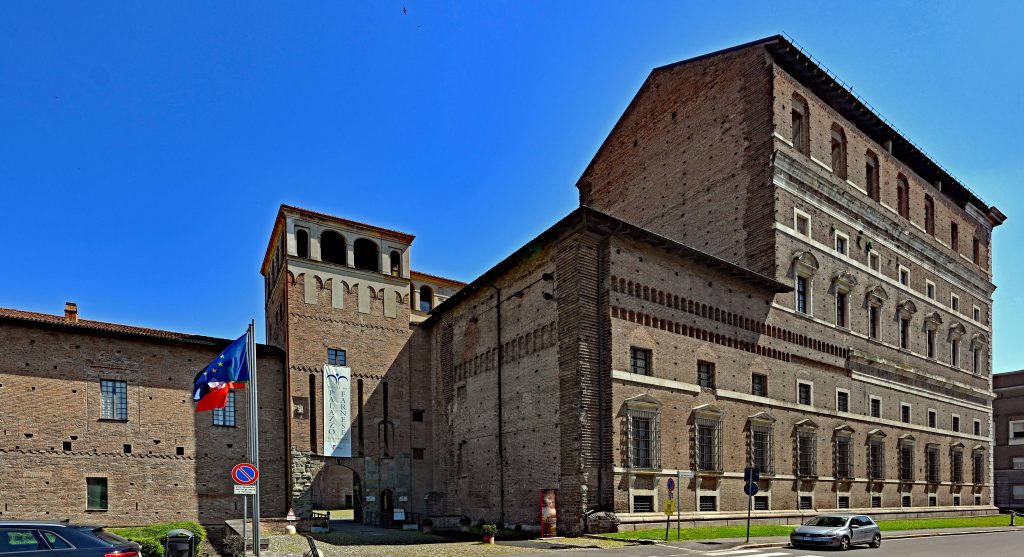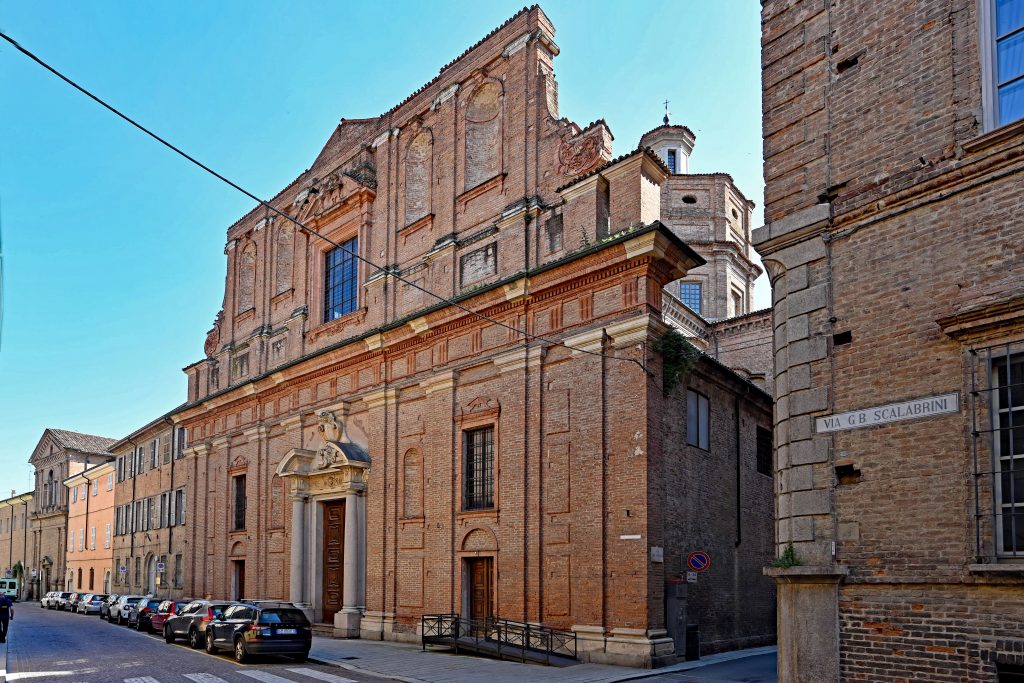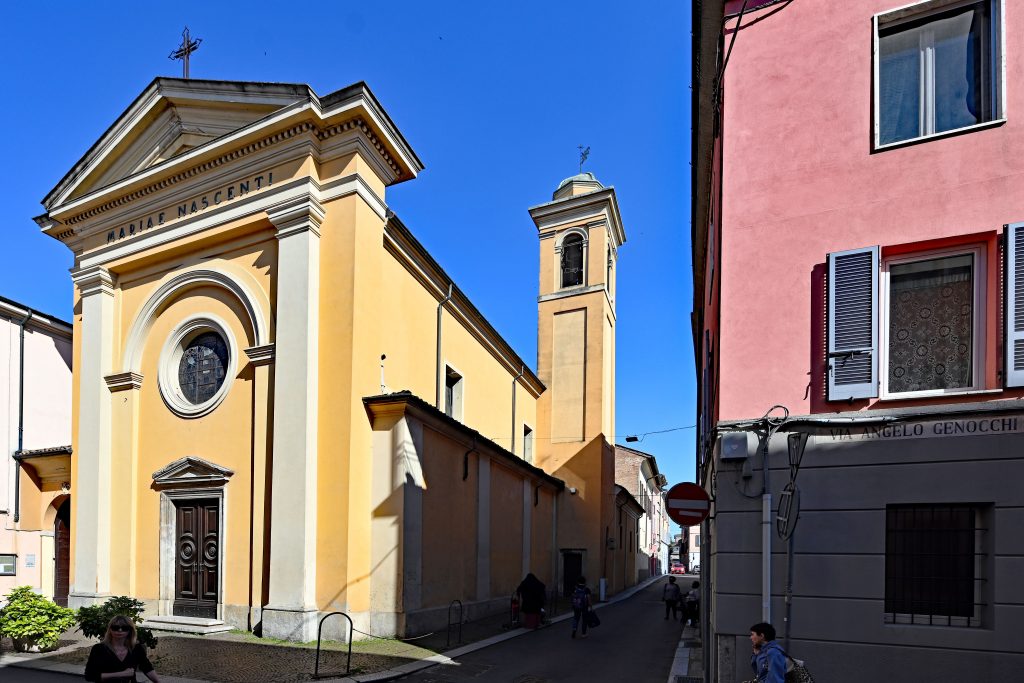Walking Through Piacenza: A Journey Through Stone, Time, and Soul
“Strolling through Piacenza is like walking inside a living chronicle, where each building tells a chapter of Italian history—Romanesque, Gothic, Baroque, and beyond.”

📍 Start: Palazzo Farnese
Our walking journey through Piacenza begins at the magnificent Palazzo Farnese, located in Piazza Cittadella. This monumental Renaissance fortress-palace was commissioned by Margaret of Austria, the wife of Duke Ottavio Farnese, and designed by the renowned architect Jacopo Barozzi da Vignola in the mid-16th century. Although construction was never fully completed, the structure still embodies the grandeur and ambition of the powerful Farnese family.

The building’s red brick exterior is massive and fortified, reflecting its dual function as a residence and a defensive stronghold. Today, Palazzo Farnese houses the Musei Civici di Piacenza, which includes several fascinating collections: Roman mosaics, paintings, sculptures, and the famous Liver of Piacenza, an Etruscan bronze artifact used for divination. Standing in the spacious courtyard surrounded by arcaded galleries, one can easily sense the scale and significance of Farnese power in this once-pivotal city-state.
📍 Piazza Cavalli
From Palazzo Farnese, a pleasant five-minute walk southeast along Via Cittadella brings you to the heart of Piacenza: Piazza Cavalli. This beautiful and lively square is named after the two imposing equestrian statues of Alessandro Farnese and his son Ranuccio Farnese, cast in bronze by the sculptor Francesco Mochi in the early 1600s. The statues add a dramatic, almost theatrical energy to the square.
🏛 Palazzo Gotico
Dominating the square is the magnificent Palazzo Gotico, one of the best-preserved examples of Lombard Gothic architecture in northern Italy. Commissioned in 1281 by Alberto Scoto, the palace served as a town hall and judicial center. The façade features alternating bands of red brick and white marble, elegant trifora windows, and pointed ogival arches supported by slender columns. The upper portion is adorned with Guelph merlons, giving it a fortified yet elegant silhouette.

Surrounding Buildings
To the east stands the Palazzo del Governatore, a neoclassical building with a grand portico that has served various administrative functions. On the western side is the Palazzo INA and the Torre dell’Orologio, a 20th-century Rationalist building marked by clean geometric lines and a commanding civic clock tower. Just to the west of the Palazzo Gotico and slightly set back is Piazzetta Mercanti 2, an early 20th-century structure adjacent to the Generali insurance building, known for its refined symmetry and understated elegance.
This square represents the civic and economic vitality of Piacenza across centuries, and it is a perfect place to stop for coffee at one of the surrounding cafés.
📍 Piazza Duomo & Duomo di Piacenza
From Piazza Cavalli, a three-minute walk northeast along Via Legnano leads to Piazza Duomo, a quieter and more contemplative space that houses the city’s cathedral: the Cattedrale di Santa Maria Assunta e Santa Giustina.
🏰 The Cathedral
Constructed between 1122 and 1233, the Duomo is a prime example of Romanesque architecture with later Gothic and Baroque influences. The façade, made from pink Verona marble and golden-hued sandstone, features three portals framed by sculpted lions, blind arcading, and a central rose window. The 67-meter-high bell tower is capped by a bronze statue of an angel, affectionately known as the Angil dal Dom.

Inside, the church is laid out in a Latin cross plan with three spacious naves divided by massive piers and Romanesque arches. The central dome is lavishly frescoed by Guercino and Lodovico Carracci, who in the early 17th century painted scenes depicting the Glory of the Virgin Mary. The presbytery holds an intricately carved wooden choir from the 15th century, and the Baroque main altar gleams with gold and marble.
Beneath the presbytery is the crypt, one of the oldest parts of the building. It consists of five aisles supported by more than 100 small columns with carved capitals. The crypt houses the relics of Santa Giustina, and its cool, vaulted spaces offer a sense of serenity and sacredness.
📍 Basilica di Sant’Antonino
A five-minute walk north along Via Chiapponi brings you to the Basilica di Sant’Antonino, one of the oldest and most revered churches in Piacenza. Dedicated to Saint Antoninus, a Roman soldier and early Christian martyr, the basilica has been a pilgrimage site since the 4th century. The current Romanesque structure dates primarily from the 11th century, though it retains earlier elements.

The basilica is remarkable for its unusual octagonal bell tower, richly carved capitals, and long nave with alternating columns. The Porta del Paradiso (Paradise Portal), a 12th-century sculptural masterpiece, serves as a side entrance and depicts biblical scenes in expressive relief. Inside, visitors can admire ancient frescoes, serene cloisters, and the crypt where the relics of Saint Antoninus rest beneath the altar.
📍 Procura della Repubblica
Located immediately beside the Basilica di Sant’Antonino is the Procura della Repubblica, Piacenza’s main courthouse. This modern civic building, constructed in the early 20th century in a Rationalist style, features a strict, symmetrical façade with minimal ornamentation. It contrasts strongly with the Romanesque and Gothic architecture nearby, reflecting Italy’s more recent history of centralized administration and legal structure.
📍 Comune di Piacenza – Urban Planning Department

Just a few steps from the courthouse, you’ll find the Comune di Piacenza – Dipartimento Assetto del Territorio – Unità Operativa Urbanistica. This building plays a central role in the city’s ongoing development and conservation efforts. Housed in a functional yet contextually respectful modern structure, it is responsible for urban planning, zoning, and historical preservation within Piacenza. Its location in close proximity to both medieval and modern structures is a symbolic reminder of the city’s dialogue between heritage and innovation.
📍 Chiesa di Santa Maria in Gariverto

Our final destination is the Chiesa Cattolica Parrocchiale di Santa Maria in Gariverto, a short five-minute walk south via Via San Siro. Tucked away from the main routes, this charming parish church offers a more intimate view of Piacenza’s religious life.
The church has Romanesque origins, later renovated with Baroque touches. Its modest stone façade leads into a single nave interior with wooden altars, fragments of ancient frescoes, and a calm, devotional atmosphere. It’s a peaceful conclusion to a day immersed in the layers of Piacenza’s sacred architecture.
🌇 Conclusion
This walking tour of Piacenza takes visitors on a chronological and spatial journey through almost 2,000 years of history, from Renaissance power and medieval devotion to modern justice and local spirituality. Each building tells its own story, and together they form a vibrant urban narrative where art, architecture, and daily life intersect.